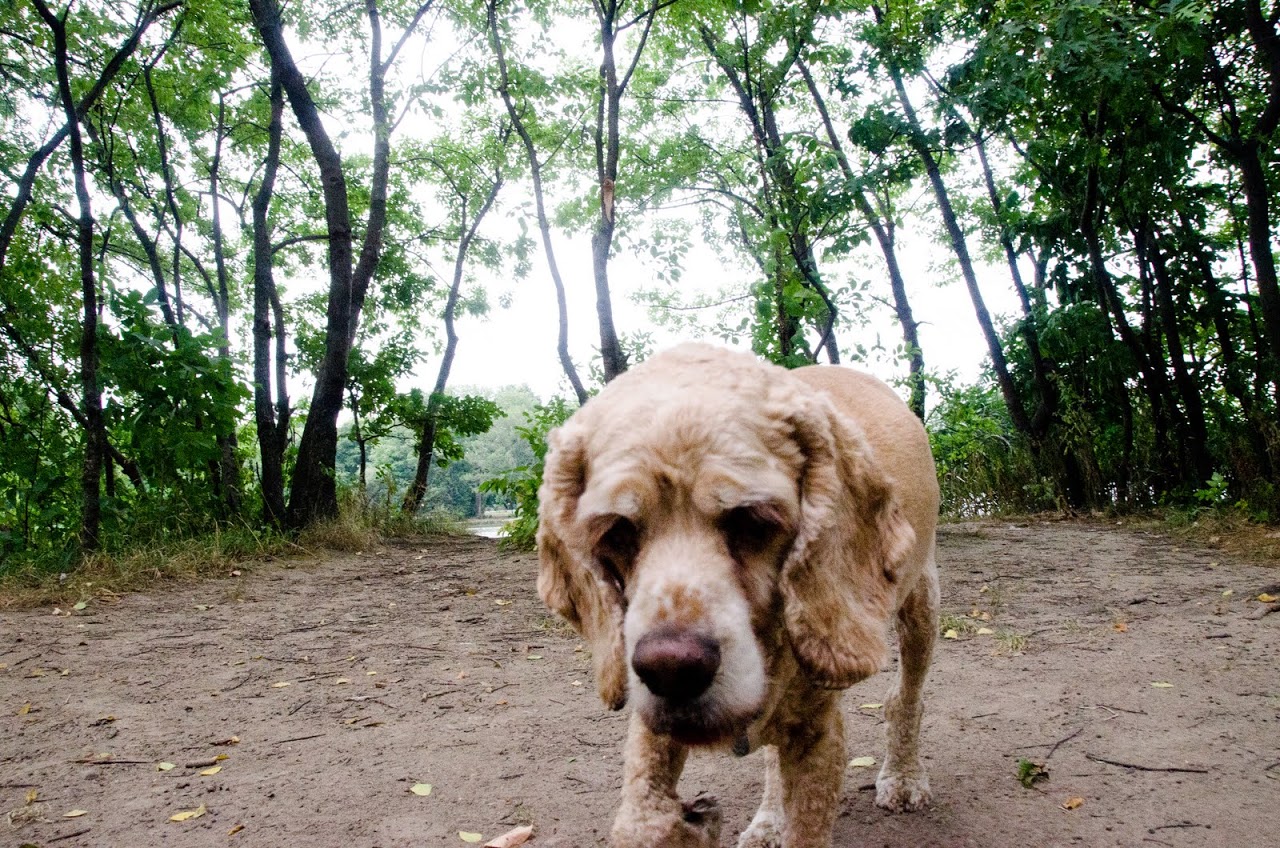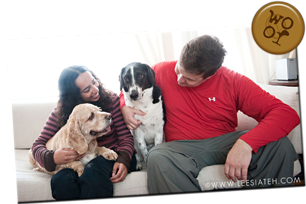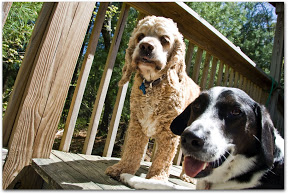When we told people in the United States that we were taking our dogs to Europe, invariably, people asked, “But, won’t they be put in quarantine?” It was the issue that frightened us the most because neither of us wanted to plan a huge long trip and have our pups stuck in some cold, awful kennel for six months. So, I did a lot of research, talked to a lot of people, and spent upwards of three full days at one stretch to determine exactly how to manage our pets’ quarantine restrictions. Please bear with me as I wind my way through this very long process and don’t be frightened by all of the steps required.
[PLEASE, PLEASE, PLEASE, for the love of dog, do not rely on this completely. This is a good guide but take the time to read through the regulations because they are changing constantly. I will update it whenever I can because I do think there needs to be a good guide on the Interwebs but don't use this exclusively.
Also, I am writing this entirely from the perspective of an American dog owner because there are some slight differences if you are from other countries. The USA is a "Listed Third Country", like Canada and Australia, so is treated differently than other countries.]
What agencies do I need to know about?
The three major agencies you need to keep in mind are: DEFRA, the USDA, and EUROPA. DEFRA is the United Kingdom’s Department of Environment, Food, and Rural Affairs, and administers the regulations for pets to enter under the
DEFRA PETS Scheme
. The USDA is the United States Department of Agriculture which has a division known as the United States APHIS, which includes one
USDA official veterinarian per state
.
Prior to the passage of the DEFRA PETS Scheme in 2004, the United Kingdom automatically quarantined all pets entering the UK for six months. Under it, those who live within the EU and the UK may apply for a Pet Passport, while people from other countries (including the United States) may complete a Third Country Certificate. Once your dog has a completed Third Country Certificate, he/she may enter the UK/EU with very little restrictions (I’ll explain the few restrictions below) and without quarantine.
EUROPA is the European Union’s administrative agency that regulates transport of pets within the EU. EUROPA’s scheme is less strict than the UK’s so if you pass the
EUROPA scheme
, you may not necessarily pass the UK, meaning that if you want to travel with your dog in both the EU and the UK, go ahead and get all the paperwork necessary for the UK PETS Scheme.
*Please note: on January 1, 2012, all this is going to change and the UK PETS scheme is going to come into line with the EUROPA scheme. If you will be traveling to the UK prior to January 1, 2012, you will need to follow the steps listed below. I have put below in asterisks where the new requirements will differ from the current rules.
Step 1: May I bring my pet?
The United Kingdom does not allow
certain "dangerous" breeds to enter the UK
. Period. My advice is not to mess with these rules and don’t try and bring them over. Also, only dogs, cats, and ferrets are permitted to enter the UK under the PETS scheme. Don't try bringing in rabbits or pet snakes because they'll likely be confiscated.
Step 2: Find an approved pet transporter into the UK.
Do not book an airline flight, a cruise ship, or ferry until you have checked your plans against
this list
because these are the ONLY methods by which a dog, cat, and ferret may enter the United Kingdom.
Step 3: Determine your Departure Date (D-Date).
You could book your trip at a later point but I suggest, at minimum, figuring out your exact date of departure before you begin the rest of the process because the rest of the timing depends on your departure date (D-Date).
If you plan to book a kennel on the Queen Mary 2, you MUST call at least one year in advance because the kennels book up incredibly fast. All the kennels for the 2012-2013 cruises booked up within 24 hours on the day that the cruise bookings opened up. Directly call the Cunard Booking department and ask them to reserve a kennel. You are required to provide a deposit of 20% upon booking but that deposit is 100% refundable until 3 months before departure, so some kennels do open up a few months before the ship is ready to leave.
Step 4: Call the USDA Veterinarian
Each state’s USDA veterinarian will provide the forms necessary to be completed by you for them to authorize your Third Country Certificate. I talked to a woman in Alabama and she was incredibly helpful and sent me a big package that explained all the paperwork to be completed.
Step 5: Find a Veterinarian
You will be at the veterinarian a LOT so I highly recommend using a veterinarian that you trust and know will help you through this entire process. Your veterinarian should be a USDA approved veterinarian, able to fill out travel certificates for dogs, so ask your veterinarian if they have that qualification.
Step 6: Your Veterinarian Microchips Your Dog with an ISO standard 11784 chip
At least eight months prior to your D-Date, have your veterinarian microchip your pet with an ISO Standard 11784 chip. This is not the usual American microchip so your veterinarian might need to order it from a specialty provider. (Please note: you can actually use the American chip rather than the ISO 11784 chip but you will also need to carry your own microchip scanner. Our dogs already had the non-ISO chip but we went ahead and got the second ISO 11784 chip to avoid any confusion or problems.) HomeAway sells the ISO standard microchip for about $150. The DEFRA regulations state that your veterinarian must provide a “certification” describing this microchip and the date in which it was implanted.
I wrote up the following letter (which you are welcome to copy and use) and provided it to my veterinarian which he then signed in BLUE ink a few days after the microchipping. Please be kind to your veterinarian and bring your own blue pen for him/her to use!
[Address of Veterinarian]
Re: [Dog’s Name] Microchip Certification
To Whom It May Concern:
I, [Name of Veterinarian], a veterinarian at the [Name of Veterinary Office], certify that [Dog’s Name], a [age of dog] year old [neutered/spayed?] [male/female] [color] [breed] dog, was inserted with an ISO Standard 11784 [name of microchip company] microchip, numbered [microchip number] on [date of microchipping].
The microchip was inserted between [location of microchip].
[Dog] has a pre-existing microchip at [location of pre-existing microchip] numbered [pre-existing microchip number.]
[Dog’s] owners are [owners’ names] at [address] and [phone number].
Date and signature of veterinarian in BLUE INK
*Beginning January 1, 2012, microchipping must be done at least 21 days prior to the D-Date (much easier than the eight months before!). You will still need to provide some sort of certificate.
Step 7: Your Veterinarian Gives Your Dog a Rabies Shot
At the same visit at the microchipping, your veterinarian can give your dog a rabies shot. The rabies shot must be given AFTER the microchipping. If possible, I recommend asking your veterinarian for a three-year rabies vaccine (fairly standard in the United States) because it will prevent you from needing to update your Third Country Certificate for three years.
Your veterinarian must provide a “certification” that he gave the dog the rabies vaccine after the microchip, so my veterinarian signed the following letter which I provided to him a few days after he gave the dogs their rabies vaccinations.
[Address of Veterinarian]
Re: [Dog’s Name] Rabies Vaccination Certification
To Whom It May Concern:
I, [Name of Veterinarian], a veterinarian at the [Name of Veterinary Office], certify the following rabies vaccination:
Name of Dog:
Age/Birthdate:
Sex:
Coloring/Breed:
Microchip number: [ISO 11784 chip number], inserted on [date], between his [location of microchip], immediately before the rabies vaccination
Date of rabies vaccination:
Vaccine manufacturer/product name/batch number:
Vaccination valid until:
[Dog’s name]’s owners are [name of owners], at [address and telephone number].
Veterinarian signs and dates in BLUE INK
*Under the 2012 rules, the vaccination will need to be done 21 days prior to the D-Date.
Step 8: Your Veterinarian Pulls a Rabies Serotological Test
At least six months before the D-Date and at least three weeks after your dog receives the rabies vaccination, your veterinarian will need to pull blood from your dog and send that bloodwork to Kansas State University. That is the only approved laboratory to complete DEFRA bloodwork in the United States. I recommend having Kansas State’s phone number and email address handy because our veterinarian needed to call them to find out exactly what they needed.
The date on which the bloodwork is drawn is the crucial date for your dog because your dog may not enter the UK until six months AFTER that date. We did this step in December, approximately 7 ½ months before the D-Date, just to be on the safe side, in case there was some sort of screw up and we needed to have our vet draw more blood.
Kansas State faxed the test results back within 2 weeks, showing that the rabies neutralizing antibody titre was equal to or greater than 0.5 IU/ml, in both dogs.
You will need the original test results from your veterinarian. In our case, Kansas State never mailed the test results and only faxed them to our veterinarian and the fax was sufficient.
*Under the 2012 rules, this step is going to be abolished completely. Yay!
Whew! Okay, so I'm going to take a break and finish up this whole process next week. I know it's a lot but it really isn't that bad.
















